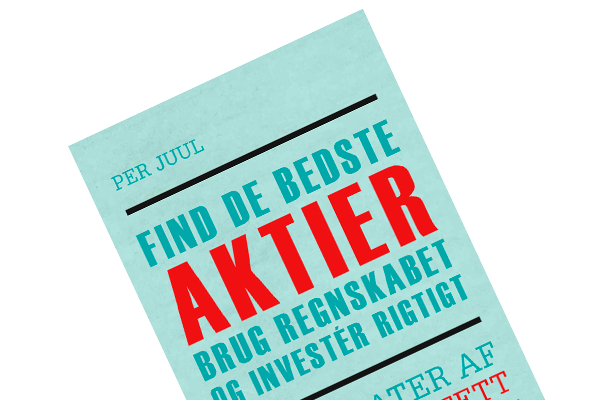Abstract
- Find the best stocks (Danish title: Find de bedste aktier) goes through the annual reports structure and components, metrics and qualitative aspects of businesses; all the stuff one needs to keep an eye on when trying to, yes, find the best stocks.
- The author recommends to invest in businesses whose return on invested capital (ROIC) exceeds the weighted average cost of capital (WACC).
- Enterprise Value (EV) is a business’ ‘true value’, as it represents the sum an acquirer would need to pay to acquire it.
Per Juul has written a sharp book that goes through the anatomy of the annual report and some of the metrics one should consider when trying to, yes, find the best stocks. I’ll dedicate this post to some of the key figures I haven’t addressed in other posts yet.
ROIC > WACC = $
To explain this ‘mathematical proposition’, I’ll once again draw on Warren Buffett. He always says that one should look for businesses whose return on invested capital (ROIC) exceeds the weighted average cost of capital (WACC). Let’s break it down!
Invested Capital (IC) is the capital that is tied into the business’ operations that enables it to generate earnings. Said capital cover interest-bearing debt + equity. Note that other investors’ formulas subtracts cash and cash equivalents.
Return on Invested Capital (ROIC) is the return that is generated on said capital. This is calculated by dividing the invested capital with the net operating profits after tax (NOPAT): ROIC = NOPAT / IC.
Let’s try to illustrate this with an example. In 2016 Sports Direct had operating profits of 212 million pounds, which is taxed by 19%. They currently have 609 million in interest-bearing debt and equity of 1,164 million of which 423 million is cash. The calculations go as such:
- NOPAT: 212 x (1-19%) = 171 million.
- IC: 609 + 1164 – 423 = 1,350 million.
- ROIC: (171 / 1350) x 100 = 12,6%
Now that we know what the ROIC is, we need to figure out if that exceeds the weighted average cost of capital (WACC). The full formula is rather complex, and the web has tons of ressources on it, i.e. Investopedia’s definition.
At its core, management can borrow money two places: 1) via its shareholders (cost of equity), or 2) via creditors (cost of debt). In terms of the former, the ‘interest’, or cost, of equity centers on what the shareholders could earn on its capital elsewhere. For instance, if Sports Direct wanted to allocate 100 million to open a series of fitness centers, which they expect will generate 5 million in earnings, the return is 5%. The shareholders should evaluate whether that’s satisfying. If they believe a 7% return is available to them by investing in an index fond or the like, Sports Direct’s proposal is not of interest. In this case, the WACC is 7%. This cost is an estimate, but the cost of debt is not. You can probably find that number in the annual reports, but let’s just use the current interest rates level, i.e. 1-3%.
Having settled on some numbers, we need to figure out how Sports Direct has been funded in the past, i.e. what is the split between debt and equity. On average, Sports Direct has carried 726 million pounds of debt during the last ten years. Its equity has averaged 471 million. However, Sports Direct has paid of debts heavily the last few years, and the 2016 numbers are 973 million in debt and 1,386 of equity. Hence, let’s just assume a 50-50 split. The calculations look as such:
- Cost of debt: 3% x 50% = 1.5%
- Cost of equity: 7% x 50% = 3.5%
- WACC: 1.5% x 3.5% = 5%
These scenarios seem to favor Sports Direct, since each 100 pounds invested in the business returns 107 next year: 100+(12.6-5) = 107.6
Enterprise Value: The business’ ‘true value’
Enterprise Value (EV) is a business’ ‘true value’, as it represents the sum an acquirer would need to pay to acquire it. Per Juul illustrates it as such: If a debt-free company has a market value of 1 billion, but sits on 300 million in cash, the acquirer would need to pay 700 million, since the acquirer can ‘withdraw’ the 300 million immediately after the acquisition. If the business carry any debt, the acquirer would take-on these obligations. Most businesses do carry debt, which the formula takes into account:
- Enterprise Value = market value of common stock + market value of preferred equity + market value of debt + minority interest – cash and investments.
Let’s again use Sports Direct as an example. When I analyzed the business, it had a market cap of 1,570 million, no preferred stock (0), 973 million in debts and 423 million in cash. Sports Direct’s Enterprise Value is thus 2,120 million (1570 + 973 + 0 – 423).

One thought on “Book Summary of Find the Best Stocks: Use the Annual Report and Invest Right”